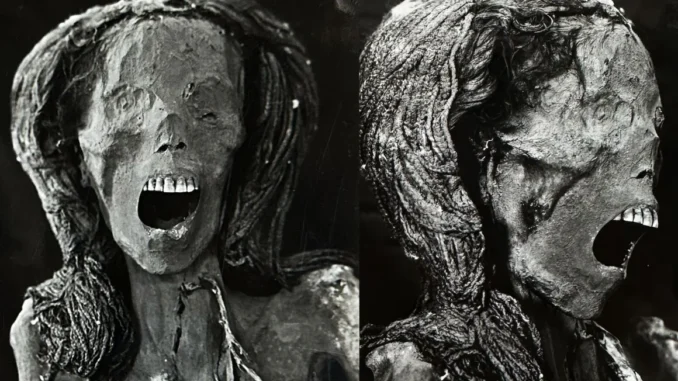
Scientists at Chicago’s Field Museum of Natural History have peered beneath the wrappings of ancient Egyptian mummified human remains to uncover new details about their identities and how they were prepared for the afterlife — all without removing a single piece of linen.
In September, staff members rolled 26 of the mummies on display at the museum on specially built carts to the parking lot to be put through a mobile CT scanner. The nondestructive technology resulted in thousands of X-rays of the mummies and their coffins. When stacked together, the X-rays created 3D images that revealed the skeletons and artifacts inside.
The new insights are helping to shed light on Egyptians’ mortuary practices more than 3,000 years ago as well as what they thought was important to carry into the afterlife.
While the scans took about four days to complete, the processing and analysis of the 3D renderings may take up to three years, said JP Brown, senior conservator of anthropology at the museum.

In addition to providing insights about the best methods to preserve the mummies for generations, the scans also offer a chance to understand the individuality and personal details of each mummified Egyptian in a respectful way.
“From an archaeological perspective, it is incredibly rare that you get to investigate or view history from the perspective of a single individual,” said Stacy Drake, human remains collections manager at the Field Museum. “This is a really great way for us to look at who these people were — not just the stuff that they made and the stories that we have concocted about them, but the actual individuals that were living at this time.”

Preparing for the afterlife
“Inside Ancient Egypt” is one of the most popular exhibits at the museum and includes a three-story replica of a type of tomb called a mastaba. The tomb’s burial chambers, dated to 2400 BC, contain 23 human mummies and more than 30 animal mummies.
Ancient Egyptians believed that the soul remained inside the body after death, so embalmers mummified bodies to preserve the spirit for the afterlife, according to Field Museum scientists.
The spiritual and biological ritual of mummification could take 70 days, including removing internal organs except for the heart because it was thought to be the soul’s home. Embalmers used salt to dry the bodies, then wrapped them in linens, sometimes writing prayers or including protective amulets. A ceremonial burial would be the final step to send the mummified person on to the afterlife.
Any internal organs removed during the process were typically placed in canopic jars, each featuring an iconographic lid with one of the four sons of the Egyptian god Horus to protect each organ. Imsety was the human-headed god who protected the liver, while Hapy had the head of a baboon and protected the lungs. Jackal-headed Duamutef protected the stomach, and falcon-headed Qebehsenuef watched over the intestines.
But the new CT scans revealed that some embalmers chose to make packets for the organs and reinsert them within the mummies. Within the packets were wax statues of the sons of Horus responsible for protecting the organs. The statues helped the museum scientists identify the organs in each packet, Brown said.
Ancient Egyptians viewed the afterlife in a similar way to how modern people think about retirement savings, according to Brown.
“It’s something you prepare for, put money aside for all the way through your life and hope you’ve got enough at the end to really enjoy yourself,” he said. “You want to be living your best afterlife.”
Not every ancient Egyptian was mummified, but the restricted practice apparently was common among the upper middle class and those of high status, Brown said.
Burials for pharaohs, the rulers of ancient Egypt, were comparable to the status of a top-of-the-line automobile. Meanwhile, Lady Chenet-aa, one of the museum’s most popular mummified individuals, had a burial on the scale of a high-end luxury car, Brown said.